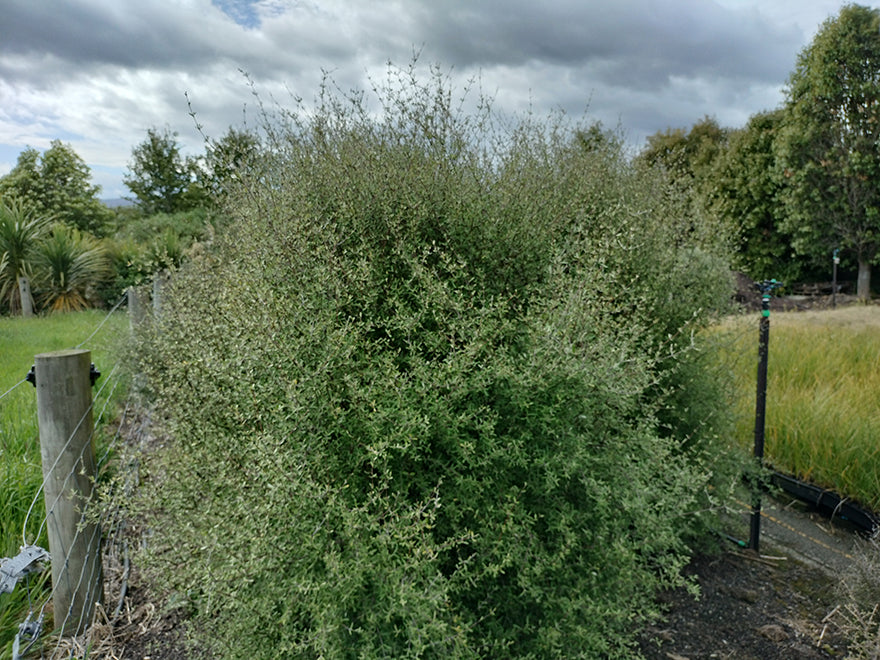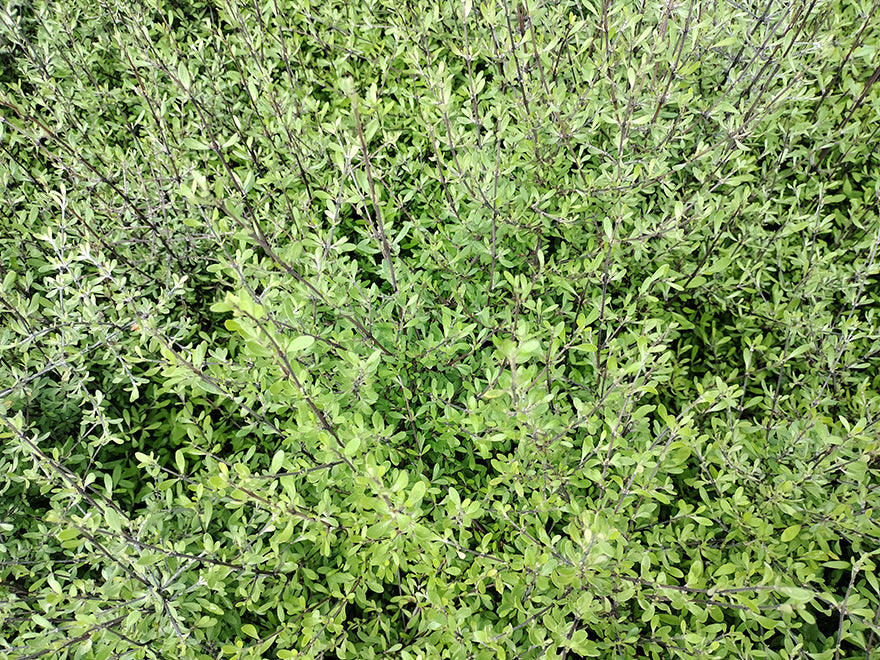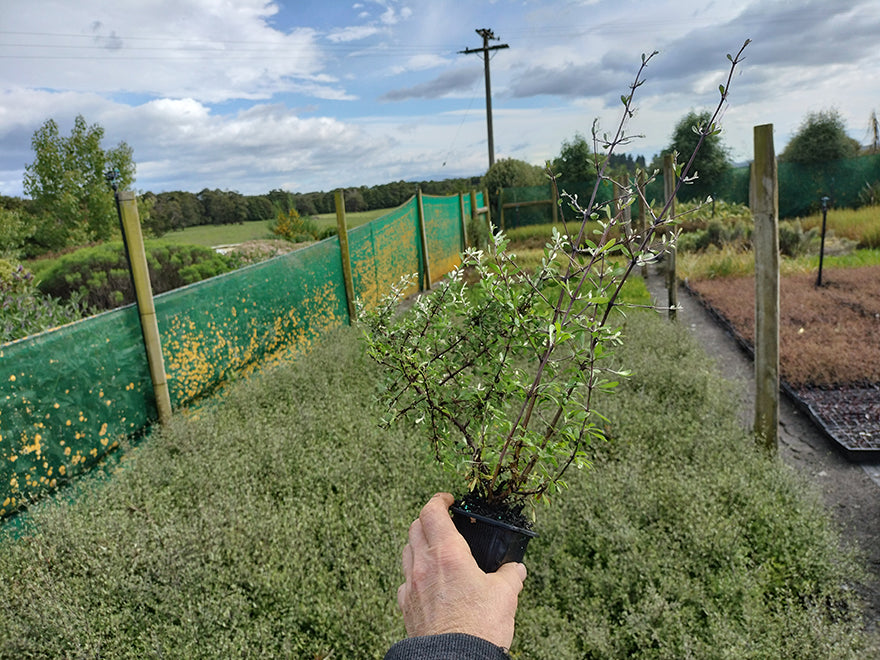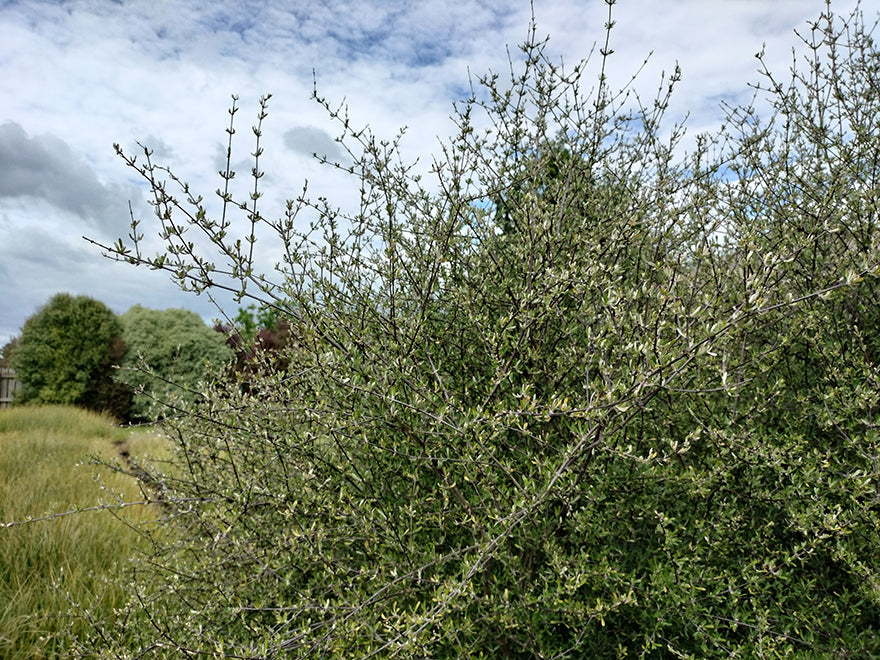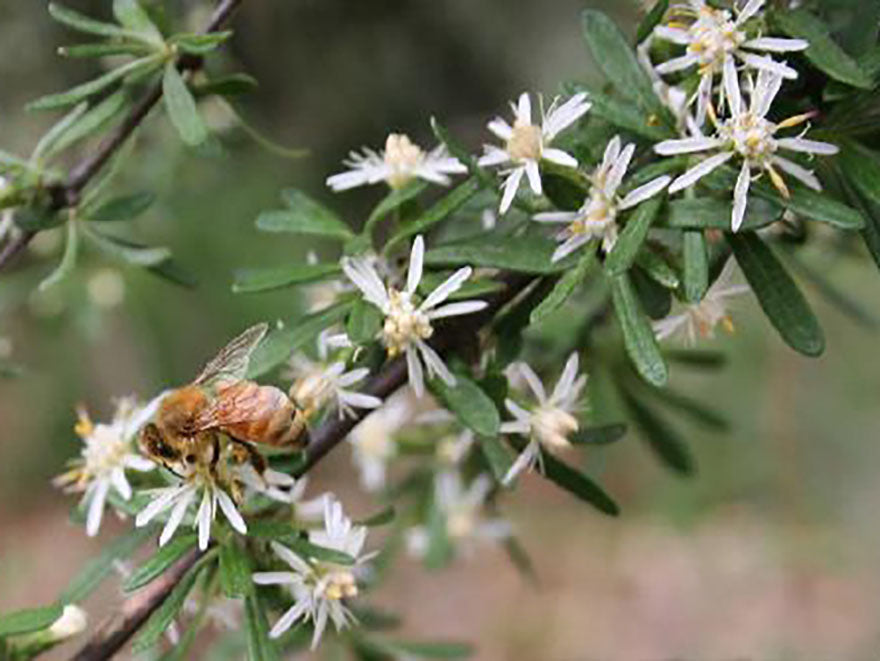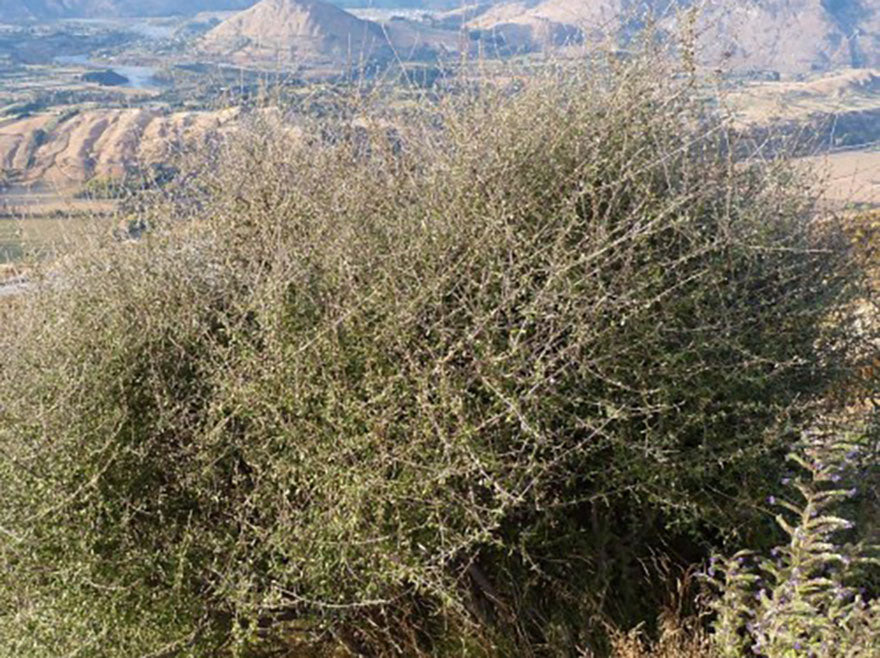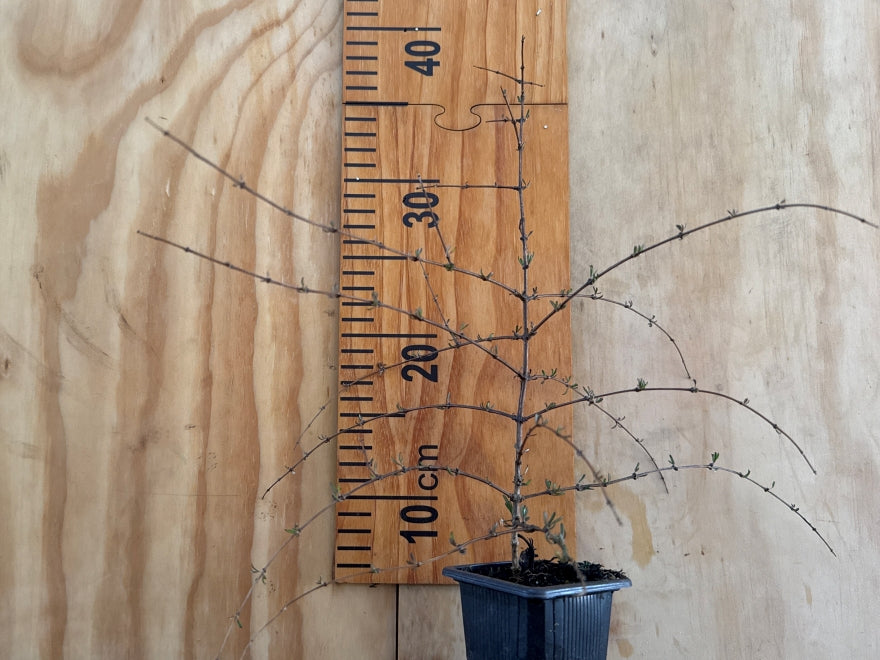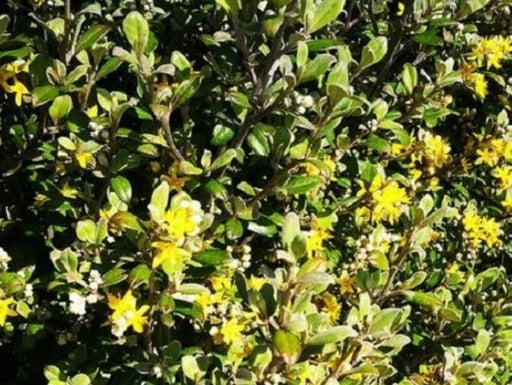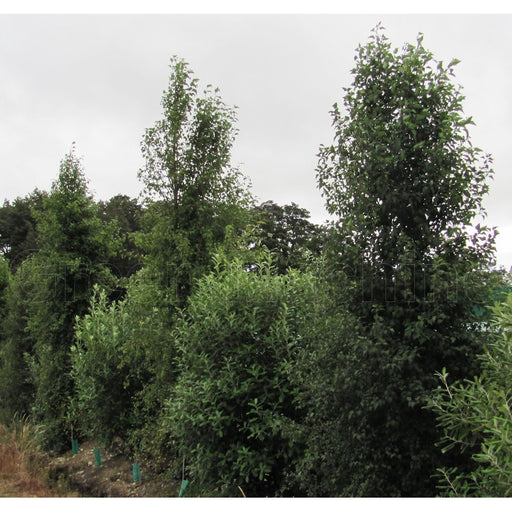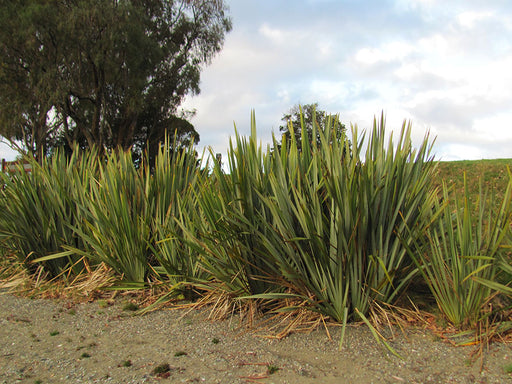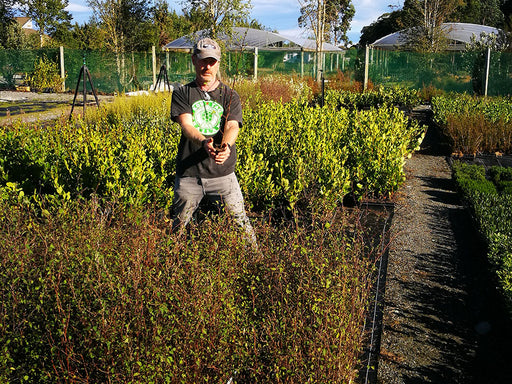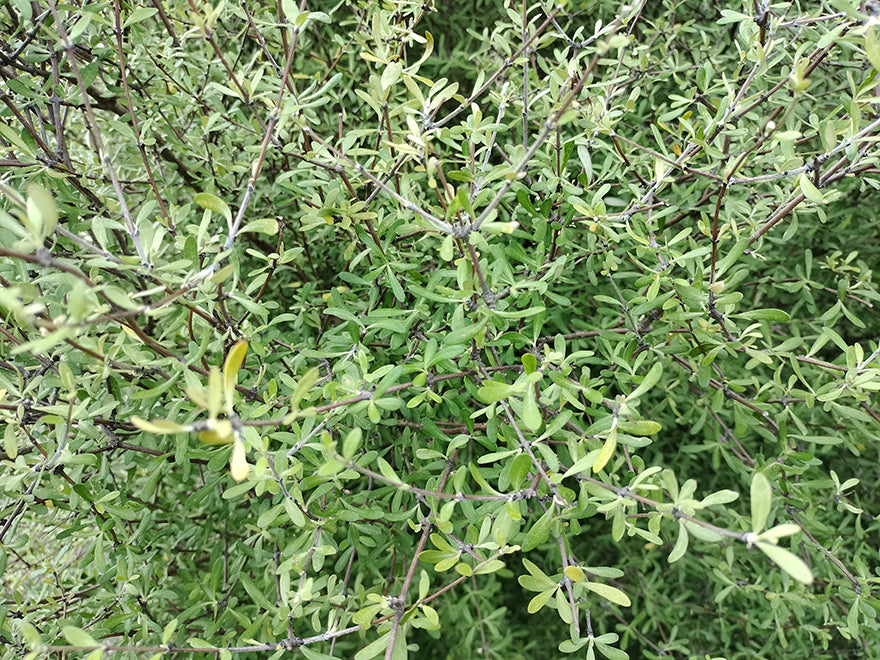
5x Olearia Fragrantissima - $5.99 each
Olearia odorata (Twiggy Tree Daisy)
Plant Details
| Plant Name | Common Names | Family | Origin | Type |
|---|---|---|---|---|
| Olearia odorata | Twiggy tree daisy, tree daisy | Asteraceae | Aotearoa New Zealand | Evergreen shrub/small tree |
Overview
A fine-twigged, divaricating New Zealand native valued for its dense mesh of branchlets and tiny leaves, creating a superb wildlife-friendly shelter or clipped hedge. In late spring to early summer it bears masses of small, sweetly scented white flowers that attract pollinators. Tough, wind-tolerant and frost-hardy once established.
Key Features
-
Foliage: Minute, bright to grey-green leaves tightly spaced on interlacing branchlets; very tidy texture for hedging or habitat planting.
-
Flowers & Fruit: Clouds of tiny, fragrant white daisies in late spring/early summer; nectar sources for insects; occasional seed heads follow.
-
Form & Habit: Naturally divaricating, twiggy, and upright; clips cleanly for narrow hedges/shelter.
-
Growth Rate: Moderate in free-draining soils.
-
Cultural/Ecological Value: Excellent habitat plant for small native birds and invertebrates; tolerant of coastal wind and dry conditions once established.
Mature Size
| Height | Spread | Form |
|---|---|---|
| 2–4 m (kept 1–2 m as a hedge) | 1.5–3 m (pruned narrower for hedges) | Dense, divaricating, upright |
Ideal Growing Conditions
| Light | Water | Soil | pH | Frost Tolerance |
|---|---|---|---|---|
| Full sun to light shade | Low–moderate once established; regular moisture through first summer | Free-draining; tolerates stony, sandy, and limestone soils; avoid waterlogging | Slightly acidic to alkaline | Hardy; shelter very young plants from severe frost/wind burn |
Landscaping & Garden Uses
-
Narrow hedges and shelter belts that stay neat with light clipping
-
Habitat/native gardens for structure and cover
-
Coastal and dry sites (with drainage)
-
Textural foil behind showier perennials and shrubs
Care & Maintenance
-
Planting/Spacing (hedge): 50–80 cm apart for a fast, tight knit.
-
Pruning: Light trims once or twice a year to maintain line; harder shape in late winter if needed.
-
Feeding: Light controlled-release fertiliser in spring; mulch annually.
-
Watering: Keep evenly moist through establishment; low input thereafter in suitable soils.
-
Health: Avoid heavy, wet clays; good airflow reduces mildew risk.
Additional Tips
-
Leave a few stems un-clipped over spring to enjoy the scented flower display before your summer tidy-up.
Fun Fact
Divaricating shrubs like O. odorata create intricate twig “cages” that offer superb refuge for small birds and insects in windy, open landscapes.
Why Choose Olearia odorata?
Dense texture, fragrant spring bloom, and outstanding hardiness make it a low-maintenance hedge/shelter for tough sites—while boosting biodiversity.
Pot Size
(per your standard template)
Olearia fragrantissima (Fragrant Tree Daisy)
Plant Details
| Plant Name | Common Names | Family | Origin | Type |
|---|---|---|---|---|
| Olearia fragrantissima | Fragrant tree daisy | Asteraceae | Aotearoa New Zealand | Evergreen shrub |
Overview
A compact New Zealand native celebrated for its intensely perfumed white blossoms in spring. With neat grey-green foliage and a naturally bushy habit, O. fragrantissima suits smaller gardens, paths and entrances where its scent can be fully appreciated. Hardy and easy in free-draining soils.
Key Features
-
Foliage: Small, grey-green leaves (often silvery beneath) on fine branchlets; tidy year-round.
-
Flowers & Fruit: Profuse highly fragrant white daisy-like flowers in spring; loved by pollinators.
-
Form & Habit: Compact, rounded to upright bush; clips well after flowering.
-
Growth Rate: Moderate.
-
Cultural/Ecological Value: Excellent nectar source; suitable for dry/shrubby native plantings.
Mature Size
| Height | Spread | Form |
|---|---|---|
| 1–2 m | 1–1.5 m | Compact, bushy, rounded |
Ideal Growing Conditions
| Light | Water | Soil | pH | Frost Tolerance |
|---|---|---|---|---|
| Full sun to light shade | Moderate; drought-tolerant once established | Well-drained; prefers sandy/loamy or stony soils | Slightly acidic to neutral to slightly alkaline | Hardy in most NZ gardens; protect seedlings from severe frost |
Landscaping & Garden Uses
-
Scented hedges and path edges (place where fragrance is noticed)
-
Courtyards/entrances and containers (with drainage)
-
Mixed native and pollinator plantings; coastal-tolerant sites
Care & Maintenance
-
Pruning: Lightly trim after flowering to shape and encourage density.
-
Feeding: A light spring feed; mulch to conserve moisture.
-
Watering: Regular through the first growing season; low thereafter.
-
Health: Avoid waterlogged sites; ensure sun for best flowering and fragrance.
Additional Tips
-
Site near doors, windows, or seating to enjoy the spring perfume; pinch back lightly after bloom for a tight habit.
Fun Fact
As its name suggests, fragrantissima is among the most sweetly scented of the tree daisies—small shrub, big perfume.
Why Choose Olearia fragrantissima?
Compact size, abundant perfume, and native toughness make it a standout for small gardens and sensory plantings.
Pot Size
These are our standard size in 7cm square pots.
Pot Size:
Standard Pot = 7cm Square
Large Pot = 9cm Square
Extra Large Pot = 1.5L Round
Use this guide to see how many plants of your selected pot size fit into a half or full carton.
Standard Pot = 25 plants per Carton
Large Pot= 10 plants per Carton
Extra Large Pot = 5 plants per Carton
Urban- $16.55 per Carton Rural- $23.85 per Carton
Standard Pot = 50 plants per Carton
Large Pot= 25 plants per Carton
Extra Large Pot = 10 plants per Carton
Urban- $16.55 per Carton Rural- $23.85 per Carton
Product Size:
The photo next to the ruler shows an example of the plant for sale (cm's) to give an indication of the size. Please note that the photo is for reference only; the size and appearance of the plant may vary.
Please Note:
Shipping charge applies. Available for immediate dispatch only, while stocks last.

